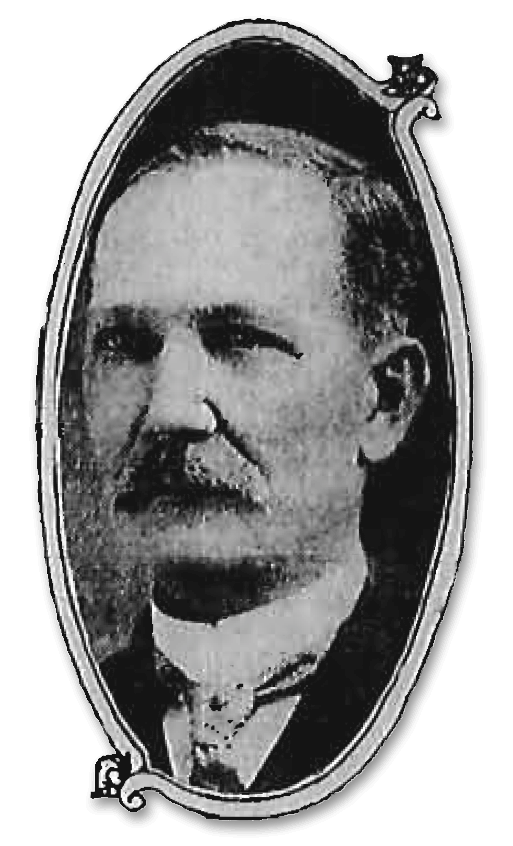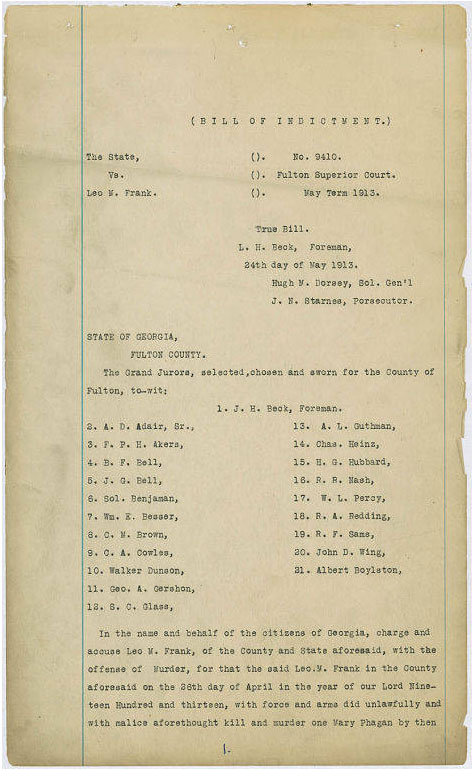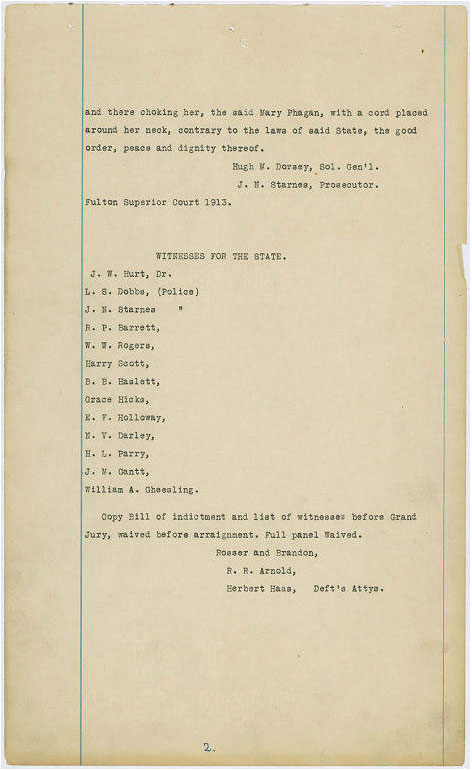
On Saturday, May 24, 1913, the grand jury members were to vote after an exhaustive review of testimony and evidence concerning the Mary Phagan murder investigation presented to them after the decision against Leo Frank the coroner’s inquest rendered at 6:30 p.m., on Thursday, May 8, 1913 through to Saturday, May 24, 1913. However, two grand jurors were not attending on the day of the vote–one, a Jewish member, traveled to New York City and M. Beutell, a Gentile, had a significant occasion that he was unable to miss. As these two men were out of town, they were not permitted to vote by absentee ballots. This, therefore, reduced the grand jury from twenty-three to twenty-one voting men. The importance of this reduction was that only a majority of eleven signature votes were necessary to indict, instead of the former twelve, in this nail-biting moment for the police and prosecution, who had spent a month building their case.
Even though Leo Frank was a businessman partly responsible for employing more than a hundred people and most of the grand jurors were businessmen as well, they were unsympathetic in their voting, primarily because the evidence was overwhelmingly strong against Leo Frank. With twenty-one men remaining, some may wonder if the vote was straddling the fence in either direction — to indict or not indict — and question whether the majority of eleven out of twenty-one would emerge to provide signatory votes requisite for an indictment.
Was the Leo Frank Grand Jury Vote a Close Call?
The result that set another powerful tone for the future of the Frank-Phagan case, just as the coroner’s inquest jury vote had done. The grand jury voted unanimously, signing twenty-one to zero in favor of indicting Leo M. Frank for the murder of Mary Phagan. With four Jews voting unanimously with the seventeen Gentile men to indict Frank, one experiences intense skepticism regarding the veracity of the Jewish community’s historical and contemporary anti-Gentile race-baiting claims over the last one hundred years that Leo Frank went to trial because he was Jewish–an innocent Jew railroaded and framed by racist Southerners who are innately anti-Jewish and that the whole affair was a widespread anti-Semitic conspiracy.
Countering the Jewish position of the case, Southerners and European-Americans at large are curious about why Frank supporters must resort to making false smears against them for the last one hundred years, when the evidence against Leo Frank was strong during the Phagan murder investigation and every level of the U.S. legal system sided with the trial jury that they were not mob terrorized and Leo Frank had a fair trial.
The Indictment of Leo Frank
The indictment read as follows:
In the name and behalf of the citizens of Georgia, charge and accuse Leo M. Frank, of the [Fulton] County and State [of Georgia] aforesaid, with the offense of Murder, for that the said Leo M. Frank in the County aforesaid on the 26th day of April in the year of our Lord nineteen hundred and thirteen, with force and arms did unlawfully and with malice aforethought kill and murder one Mary Phagan by then and there choking her, the said Mary Phagan, with a cord place around her neck contrary to the laws of said State, the good order, peace and dignity thereof.
The Frankites and Jewish Domestic Extremists: Racist Anti-Black Conspiracy
Frankites, like Steve Oney, Dinnerstein, and other Jewish activists, would make the outlandish claim that the entire question of Leo Frank’s guilt can be reduced to the word of Jim Conley vs. the word of Leo Frank. However, the unanimous indictment of Leo Frank for the murder of Mary Phagan had absolutely nothing to do with Jim Conley, because Conley was not present to testify during the grand jury. Frank’s indictment resulted from compelling evidence (without Jim Conley) being presented to the grand jurymen.
The following twenty-one grand jurymen, of which four were Jews, unanimously signed the bill of indictment against Leo Frank (Atlanta Journal, May 1913; Leo Frank Georgia Supreme Court records, Bill of Indictment, 1913; Atlanta Publishing Company, The Frank Case 1913; and Phagan Kean 1987).
The Twenty-One Members of the Grand Jury Unanimously Voting to Indict Leo Frank
1. J. H. Beck, Foreman,
2. A. D. Adair, Sr.,
3. F. P. H. Akers,
4. B. F. Bell,
5. J. G. Bell,
6. Col. Benjamin,
7. Wm. E. Besser,
8. C. M. Brown,
9. C. A. Cowles,
10. Walker Danson,
11. G. A. Gershon,
12. S. C. Glass,
13. A. L. Guthman,
14. Chas. Heinz,
15. H.G. Hubbard,
16. R. R. Nash,
17. W. L. Percy,
18. R. A. Redding,
19. R. F. Sams,
20. John D. Wing,
21. Albert Boylston.
After the grand jurymen unanimously signed the murder indictment of Leo M. Frank, he was scheduled to be tried before a cohort of thirteen men–a judge and a petit jury–to decide his ultimate fate.


Next: Leo Frank Trial Admission Equaling Murder Confession
References
Phagan-Kean, Mary. The Murder of Little Mary Phagan. Far Hills, NJ: New Horizon Press, 1989.
The Frank Case: Inside Story of Georgia’s Greatest Murder Mystery. Atlanta, GA: Atlanta Publishing Company, 1913.
Grand Jury Indictment of Leo Frank, Saturday, May 24, 1913.
Atlanta Journal, May 1913.